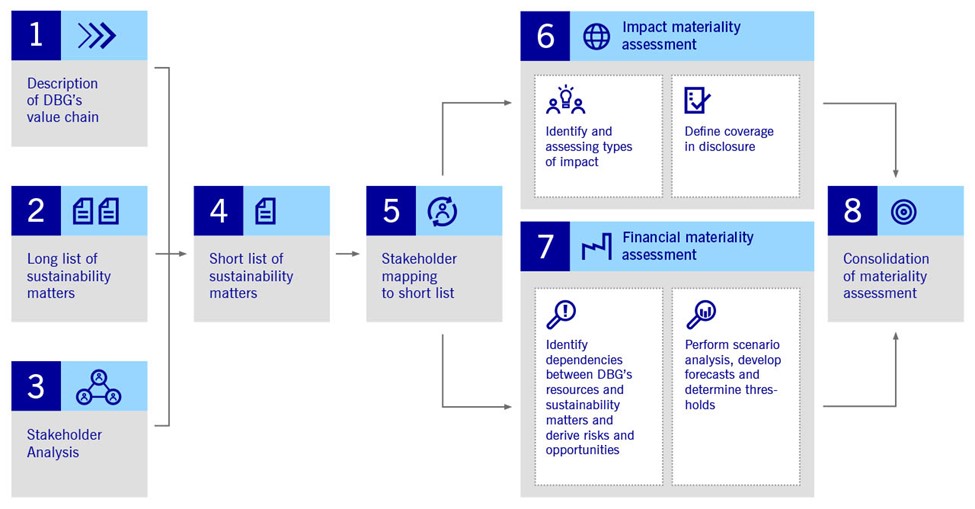Market structure
Growth financing
Going & being public
Private market
Statistics & circulars
Events at the stock exchange
Executive Board
Supervisory Board
Remuneration
Auditor
Declaration of Conformity
Articles of incorporation
Compliance
Master data
Key figures & dividend
Analysts
Shareholder structure
Share buy-back
Bonds
Credit ratings
Media releases
Ad-hoc announcements
Managers’ transactions
Notifications of major holdings
Other regulatory announcements
Sign-up service
Sustainability strategy
ESG governance
Reports, statements, policies & guidelines
Diversity, equity & inclusion
Contact

SIGN ME UP
| Name | Provider / Domain | Gültig bis | Beschreibung |
|---|---|---|---|
| ApplicationGatewayAffinityCORS | www.deutsche-boerse.com | Session | This cookie is used by the Application Gateway in addition to ApplicationGatewayAffinity to maintain sticky session even on cross-origin requests. |
| ApplicationGatewayAffinity | www.deutsche-boerse.com | Session | This cookie is used by the Application Gateway to maintain sticky session. |
| ApplicationGatewayAffinityCORS | deutsche-boerse.com | Session | This cookie is used by the Application Gateway in addition to ApplicationGatewayAffinity to maintain sticky session even on cross-origin requests. |
| CookieScriptConsent_new | .deutsche-boerse.com | 1 year | This cookie is used by Cookie-Script.com service to remember visitor cookie consent preferences. It is necessary for Cookie-Script.com cookie banner to work properly. |
| CM_SESSIONID | deutsche-boerse.com | Session | This cookie is neccessary for the CAE connection. |
| AWSALBCORS | broadcaster.walls.io | 7 days | For continued stickiness support with CORS use cases after the Chromium update, we are creating additional stickiness cookies for each of these duration-based stickiness features named AWSALBCORS (ALB). |
| ApplicationGatewayAffinity | deutsche-boerse.com | Session | This cookie is used by the Application Gateway to maintain sticky session. |
| Name | Provider / Domain | Gültig bis | Beschreibung |
|---|---|---|---|
| _pk_ses.8.b399 | deutsche-boerse.com | 30 minutes | This cookie name is associated with the Piwik open source web analytics platform. It is used to help website owners track visitor behaviour and measure site performance. It is a pattern type cookie, where the prefix _pk_ses is followed by a short series of numbers and letters, which is believed to be a reference code for the domain setting the cookie. |
| _pk_ses.8.5ea9 | www.deutsche-boerse.com | 30 minutes | This cookie name is associated with the Piwik open source web analytics platform. It is used to help website owners track visitor behaviour and measure site performance. It is a pattern type cookie, where the prefix _pk_ses is followed by a short series of numbers and letters, which is believed to be a reference code for the domain setting the cookie. |
| _pk_id.8.b399 | deutsche-boerse.com | 1 year | This cookie name is associated with the Piwik open source web analytics platform. It is used to help website owners track visitor behaviour and measure site performance. It is a pattern type cookie, where the prefix _pk_id is followed by a short series of numbers and letters, which is believed to be a reference code for the domain setting the cookie. |
| _pk_id.8.5ea9 | www.deutsche-boerse.com | 1 year | This cookie name is associated with the Piwik open source web analytics platform. It is used to help website owners track visitor behaviour and measure site performance. It is a pattern type cookie, where the prefix _pk_id is followed by a short series of numbers and letters, which is believed to be a reference code for the domain setting the cookie. |
| Name | Provider / Domain | Gültig bis | Beschreibung |
|---|---|---|---|
| VISITOR_INFO1_LIVE | .youtube.com | 6 months | This cookie is set by Youtube to keep track of user preferences for Youtube videos embedded in sites;it can also determine whether the website visitor is using the new or old version of the Youtube interface. |
| __Secure-ROLLOUT_TOKEN | .youtube.com | 6 months | It is used to authenticate and authorize users, ensuring that only legitimate requests are processed. |
| YSC | .youtube.com | Session | This cookie is set by YouTube to track views of embedded videos. |
| VISITOR_PRIVACY_METADATA | .youtube.com | 6 months | This cookie is used to store the user's consent and privacy choices for their interaction with the site. It records data on the visitor's consent regarding various privacy policies and settings, ensuring that their preferences are honored in future sessions. |
